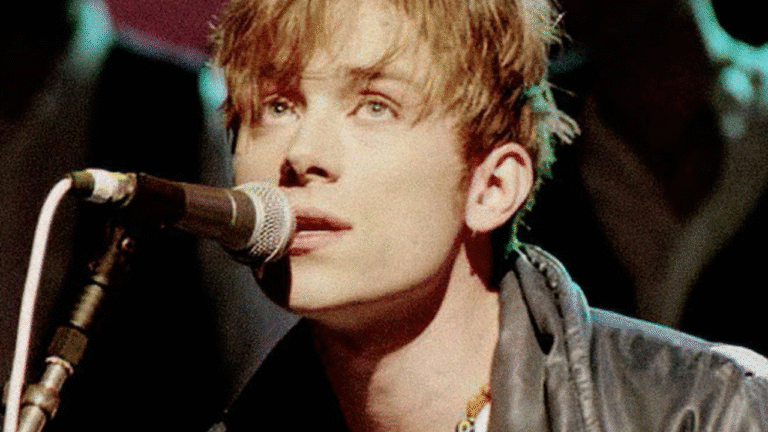In the nebulous glow of early 1990s Britain, where cultural revolution simmered beneath Thatcher’s frostbitten legacy, a singular figure emerged from the gauzy haze of art-school corridors and shadowy rehearsal rooms: young damon albarn—the introspective bard of post-industrial England.
Genesis of a Melodic Maverick
Born in Whitechapel in 1968, young damon albarn creative genesis was marinated in avant-garde eclecticism. His mother, a theatrical scenographer, and his father, a BBC-affiliated artist manager, wove an intricate cocoon of artistic immersion. This upbringing birthed a mind unshackled by conformity. Unlike his contemporaries, young damon albarn inhaled Debussy and The Kinks with equal fervor—his ears finely attuned to both baroque nuance and urban grit.
Schoolboy Reveries and the Spark of Sound
At Stanway Comprehensive and later Goldsmiths College, Damon was not merely a student—he was a sonic alchemist. While others dissected theory, he synthesized emotion. With a glint in his eye and a notebook brimming with restless lyrics, he cultivated a persona equal parts street poet and philosophical prankster.
During this chapter, he met guitarist Graham Coxon—an equally esoteric spirit. Together, they would set the scaffolding for a band that would soon rupture the staleness of the British rock landscape.
Blur: The Art School Insurgency
Before they were deified as Britpop demigods, Blur began as Seymour, a group as hungry as it was confused. Yet young Damon, with tousled hair and eyes that seemed to both mock and mourn the world, wielded a voice that oscillated between acerbic wit and wounded romanticism.
The band’s early forays—Leisure in 1991—hinted at their potential, but it was with 1993’s Modern Life Is Rubbish that Albarn’s lyrical acumen began to glisten with intellectual sheen. With every sardonic line and weary croon, he captured the ennui of a disenchanted generation adrift in supermarket aisles and concrete cul-de-sacs.
Cultural Iconoclast in the Making
What distinguished young damon albarn wasn’t mere musicality—it was his refusal to stagnate. While the tabloids anointed him a Britpop poster boy, he recoiled, reshaping Blur’s sound into something less digestible and far more sophisticated. Albums like Parklife (1994) and The Great Escape (1995) were simultaneously national anthems and socio-cultural mirror shards. Damon didn’t just sing songs; he painted sonic murals of the British psyche—equal parts Monty Python absurdity and Orwellian despair.
The Look of a Reluctant Heartthrob
Physically, young Damon was the quintessential anti-idol. Sharp-jawed, disheveled, often draped in second-hand chic—he was too smart to be a pin-up but too enigmatic to ignore. With a voice that could leap from melancholic murmurs to ragged howls, and eyes that betrayed a restless soul, he became an unwilling emblem of introspective cool.
The Multiverse Inside His Mind
Even in his formative years, Albarn exhibited an almost spiritual allergy to predictability. Whether dabbling in world music, composing film scores, or later founding the genre-bending phenomenon Gorillaz, his early proclivity for sonic wandering was no accident—it was destiny coded into his DNA.
Legacy of the Young Visionary
Looking back young damon albarn was never simply a rockstar. He was a polymath cloaked in denim. A bard who could stitch the melancholy of Chopin into the sneer of punk. His youth was less a time of becoming and more a prophecy unfolding—an early testament to a life devoted to sonic evolution and artistic insubordination.
Final Thoughts
In the annals of British music history, few have possessed the protean brilliance of young Damon Albarn. He was not just a participant in the Britpop epoch; he was its architect, provocateur, and eventual escapee. And though time has refined his craft and tempered his fire, the embers of his youth still glow in every note he conjures, every world he builds—still the dreamer with eyes fixed firmly on the periphery.

